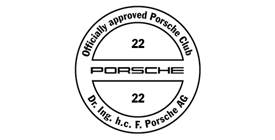Most of the plug and play kits you get, which are worth getting, and are truly plug and play use a combination of coded DME & KLR chips that will get you 90% there and customised software which hooks into a piggy back computer which allows you to tweak the maps in real time as you drive to get that last 10%. From what I can gather simple MAF kits that are no more than MAF to AFR signal converters don't have a very good reputation which is why the best (and most expensive) plug & play kits use piggy back computers which provide you with a true MAF signal. It's pretty much like a Standalone ECU (though very specialised and limited) which hooks into the stock ECU and proides another level of intelligence which enables you to achive full MAF metering and hence all the benefits of MAF. Also with simple signal conditioning solutions you are limited to the 'clock speed' of the stock ECU - which isn't very fast by modern standards so you are not getting a decent sampling rate and therefore not really getting huge benefits over the mapped AFM. Piggy backs allow you to use much faster sampling rates and therefore take far more advantage of the increased sensitivity of a MAF.
Also there is evidence to suggest that you are not really getting much more benefit from a MAF until you get upto 300bhp or more. Below that there isn't much wrong with the AFM assuming the rest of your engine is working OK. In fact there is a chap on Rennlist who got very good HP (well into the 300bhp's I think) using an AFM with spot on AFR's across the rev range. I fancy the Vitesse MAF kit but not just for the MAF sensor itself, but for other benefits it offers including semi-sequencial fuel injection, use of large injectors, ignition timing based on MAP, utilising a wideband sensor for closed loop AFR control, utilising multi fuel maps and I believe his latest development is boost control. The fact the air sensor is a MAF is an added bonus on top of all the other features.
Again I don't know all the in's and out's, but am going off what i've read about others' experiences. The route you are going down is not a well trodden one, maybe for very good reasons - but good luck! From your other post it sounds like you've got the right background to be tackling such a project.
I'm not sure which MAF is suitable. Maybe if you look to current cars with similar engine capacity and HP then i'm sure they'll be suitable (Ford Focus ST comes to mind). The SciVision kit uses a Bosch one.









